Ravi Shankar: Learning Indian Music a Systematic Approach
Edited by Elise Barnett and Mary Frances Dunham
This book was one of the first of its kind to introduce and teach Indian classical music to a Western audience. Professor Elise Barnett came up with the idea to make this book based on the lecture series Ravi Shankar gave to her students in world music at City College in 1967. Over an intensive six week period Professor Barnett and a team including Mary Frances Dunham worked closely with Ravi Shankar to produce the recordings that accompany the lessons in this book. Mary Frances Dunham was involved throughout the process of this project as an advisor and associate editor. She also provided the Western musical notations that go with the recordings.
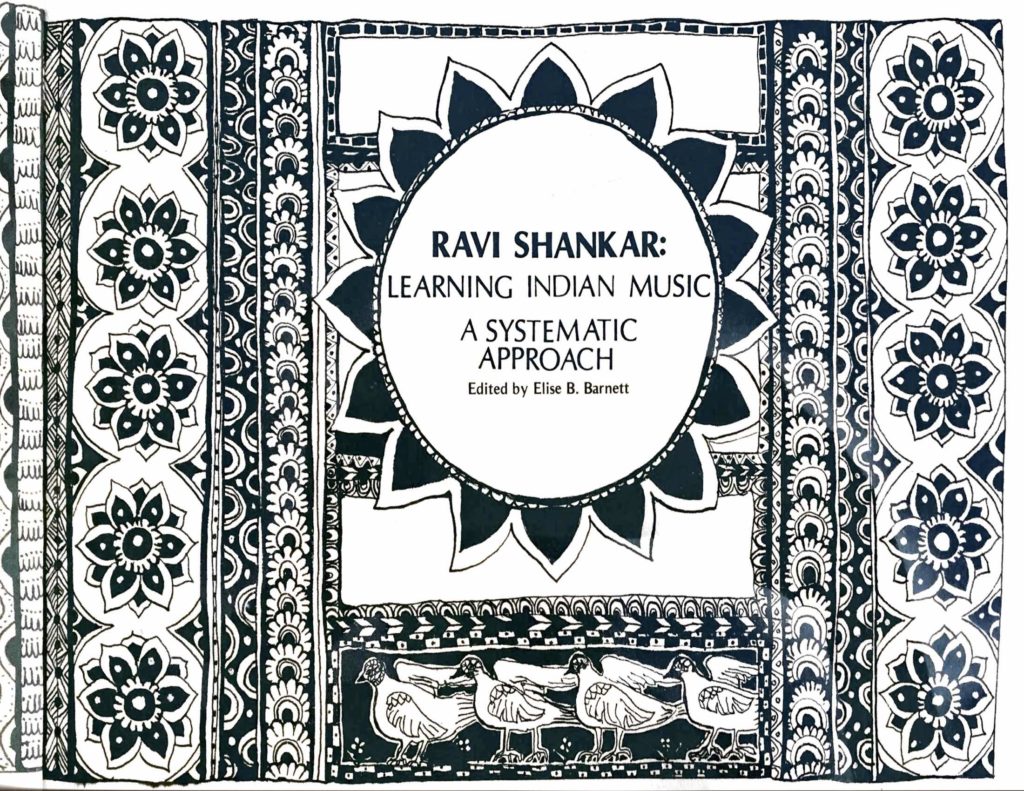
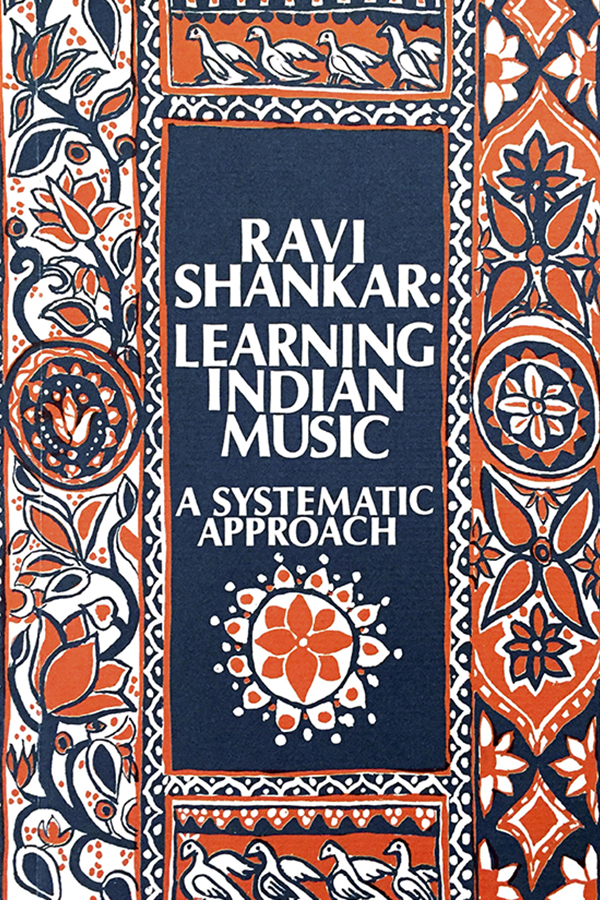
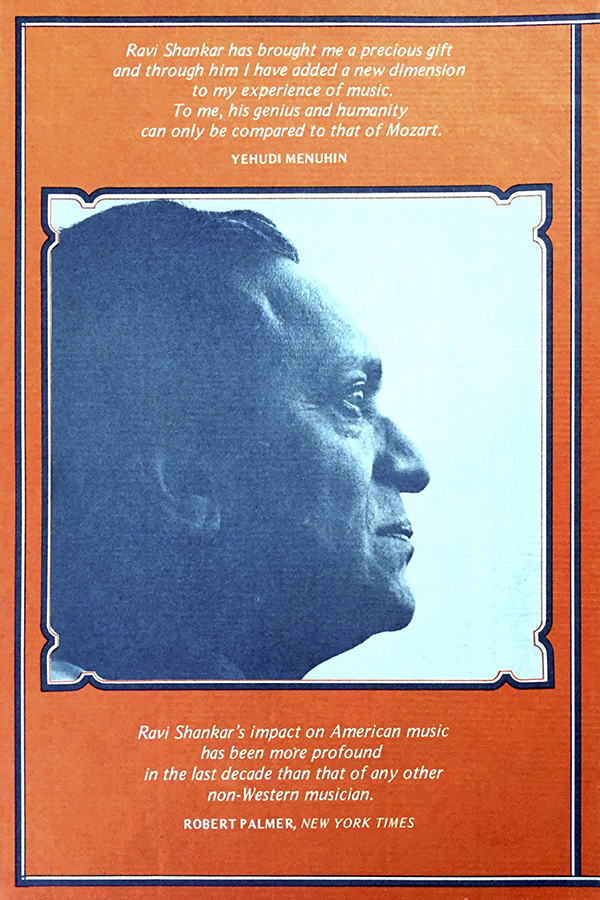
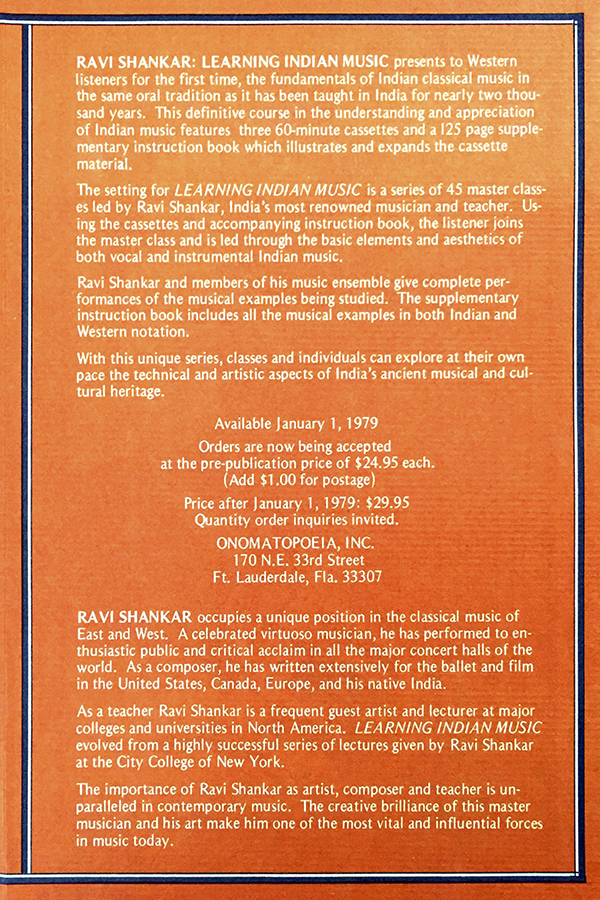
Background
The following text was prepared for a radio interview with Mary Frances Dunham by Kobi Sammelan.
Question: What was it like to work for Ravi Shankar?
A little background history about my late professor friend, Lisl Barnett: At the start of WWII Lisl Barnett (then Braun), with her husband and small daughter took refuge in India, in Calcutta, where she was active as a pianist for All India Radio and as a Montessori teacher. Her daughter went to a British school where, by coincidence, my own daughter started kindergarten many yeas later.
During her time there Lisl met Ravi Shankar and they became friends. Years later, after Lisl and her family had settled in New York and she was teaching at City College, she asked Raviji if he would give some lectures to her students. He agreed and over six weeks of once-a-week sessions he gave lecture demonstrations which Lisl tape recorded. When I was helping Lisl working on a discography of Indian art music for the Society for Ethnomusicology, Lisl played for me some of the tapes.
We began discussing how the tapes could be preserved. Then we got the idea of inviting Ravi Shankar to re-do the course with improved recording technology and so that it could be accompanied by a manual: a kit of recordings and manual for introducing the basics of Indian classical music.
Raviji agreed and for several weeks he conducted sessions in his hotel room at Gracie Square Mansions where chosen students and his assistant, Sue Jones, conducted pre-organized classes which Lisl and I had suggested and Raviji had improved. The sessions were exciting because we were working so closely with Raviji and could enjoy his ever ebullient spirit and love of interchange with the “students” (actually professional musicians in some cases.) Although my assistance occurred accidentally through Lisl, I was actually quite prepared to help since I had a background in both Western and Indian music theory. When I tried to steer Raviji toward organizing the teaching more in line with a Western preference for formulas as opposed to long sessions of imitating music, he was always patient and understanding. I think we reached a good compromise in the organization of the course.
The kit was published in an attractive box containing three tapes and a beautifully illustrated manual. I have Raviji’s signature boldly scrawled on my copy and also boxes of scrap notes that we all made together as we planned the lessons. Lisl used to say that this was the high period of her life. It was a high period for me too.
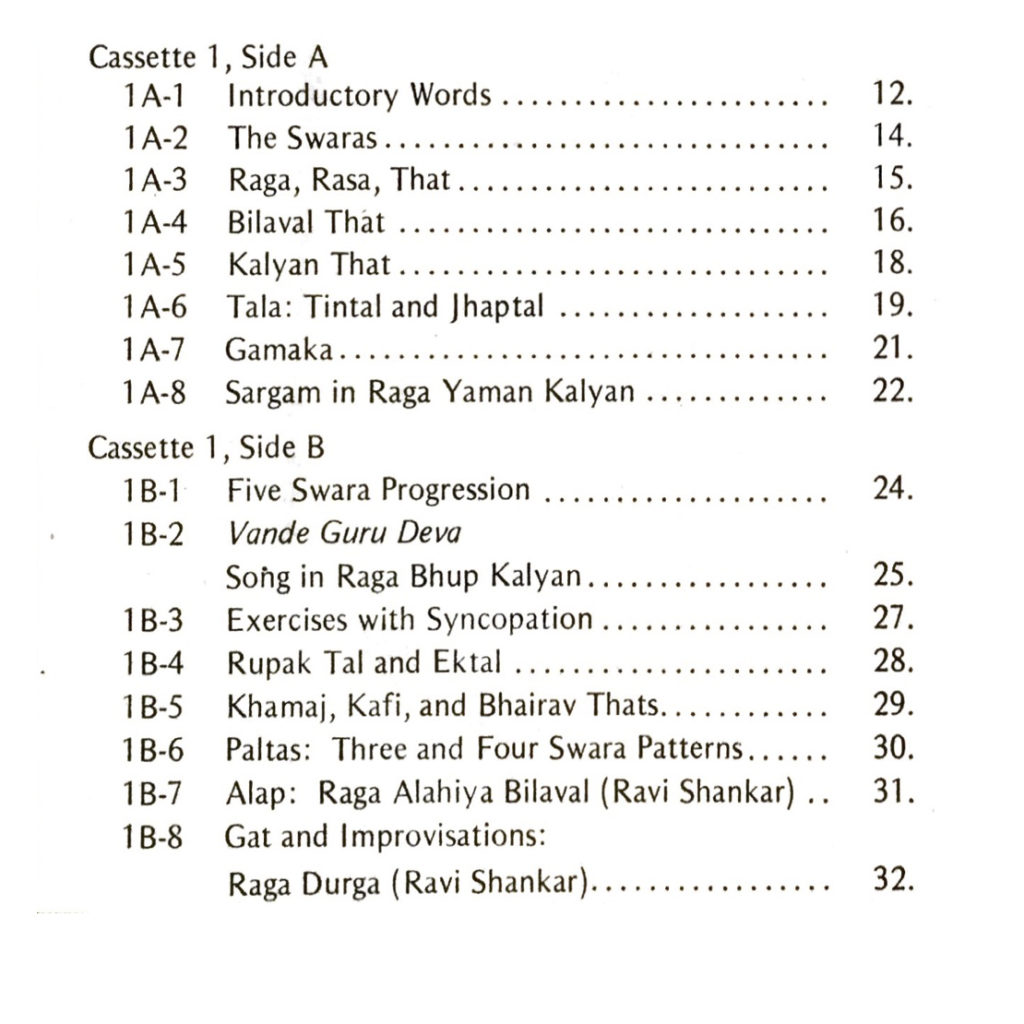
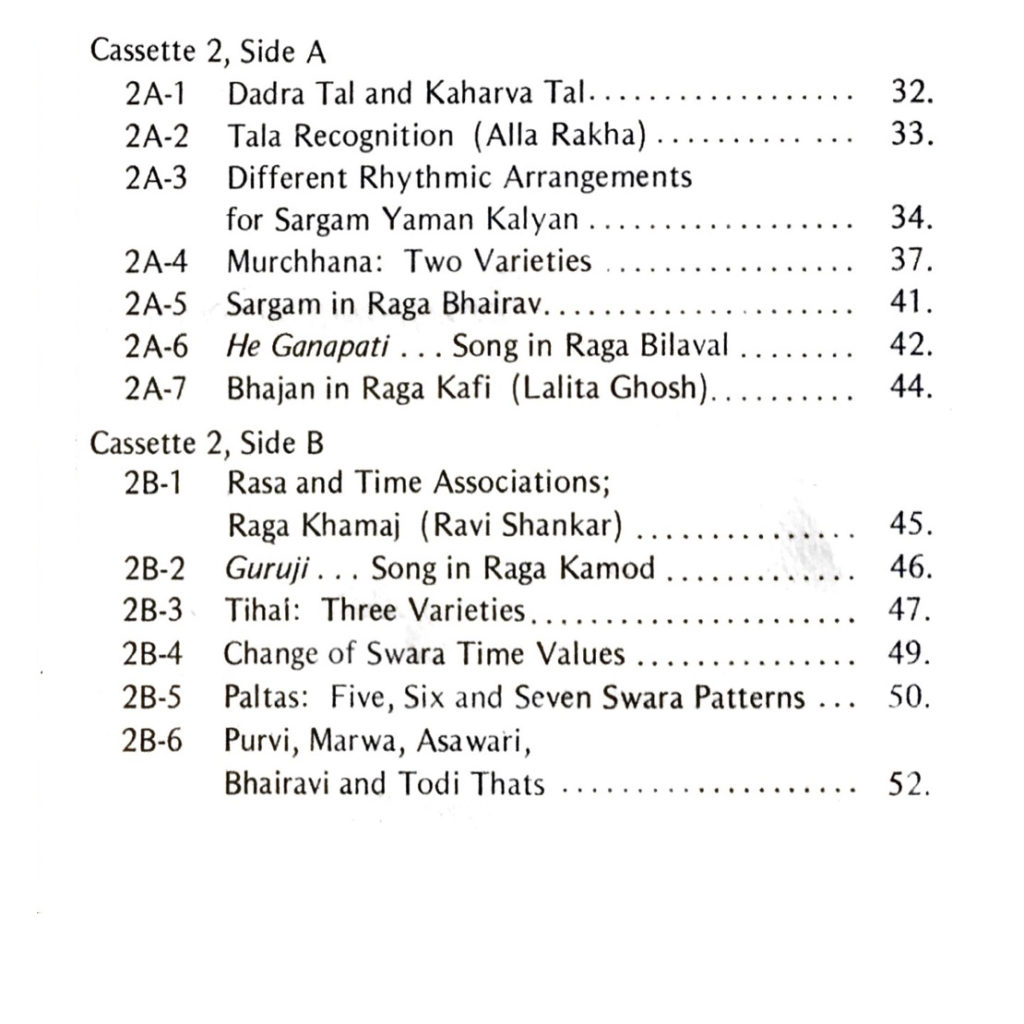
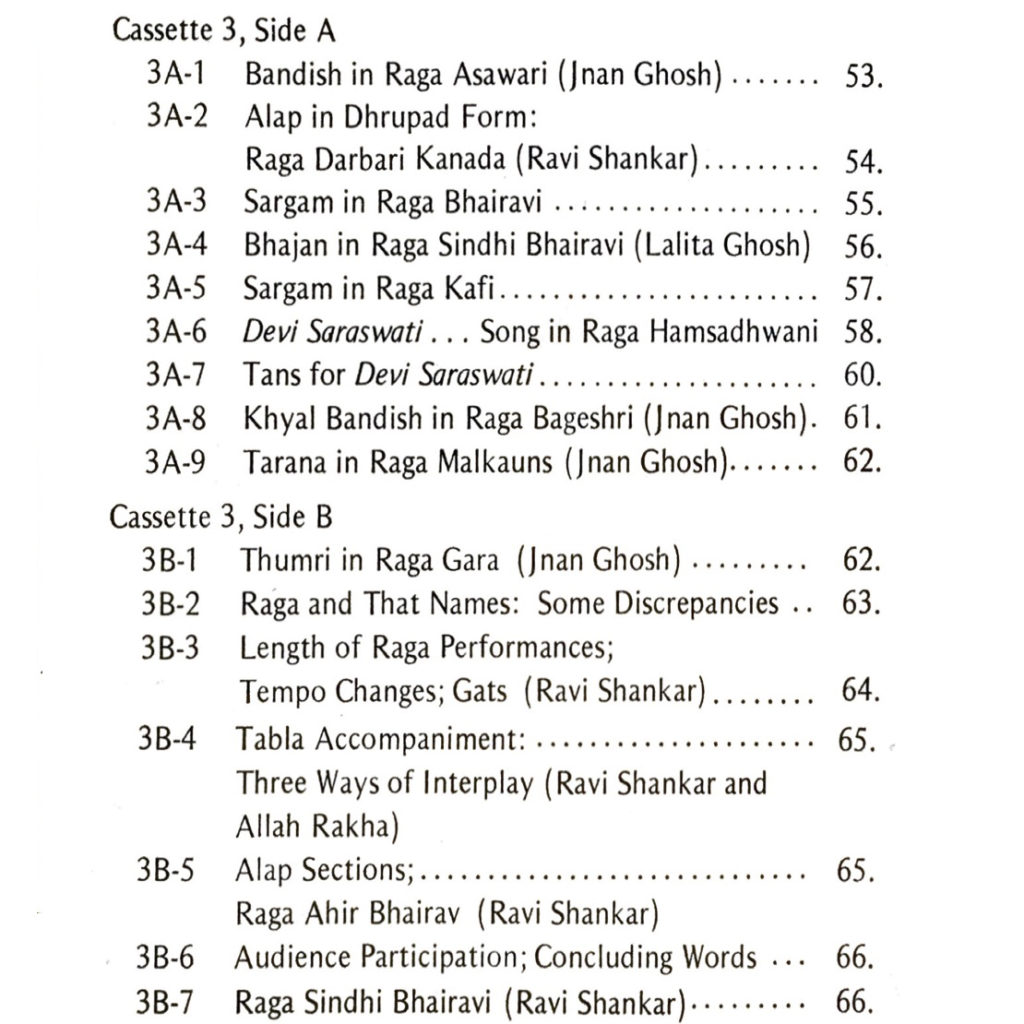
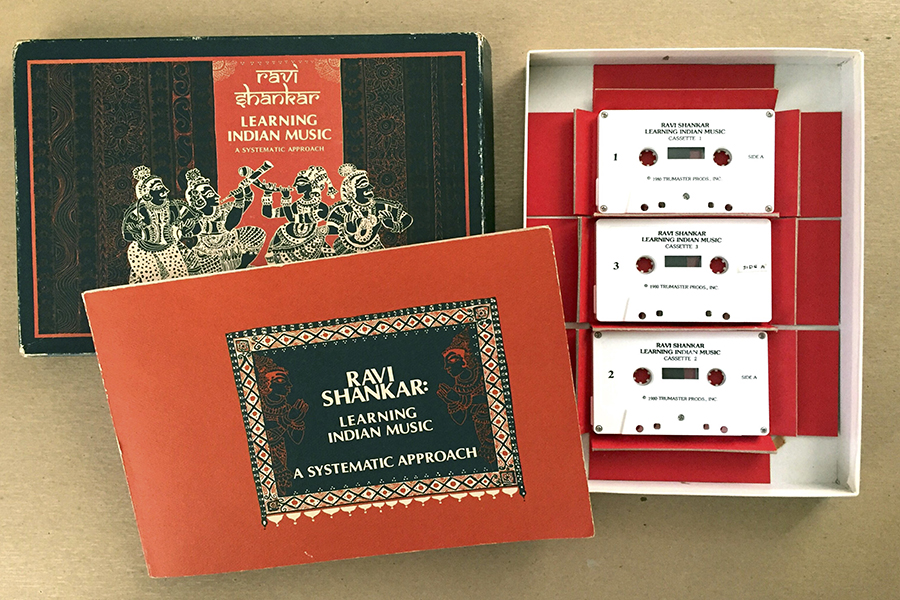
Thank you very much for posting this for anyone who is interested. 🙂
You may be interested to know that the City University of New York has a great archive on Ravi Shankar based on the lecture series he gave there in the 1970s.
Here is a link to the Ravi Shankar collection guide for materials held at the CCNY: https://library.ccny.cuny.edu/ravishankar
Thank you SO much for making possible and opening this little window into Indian music! And such a great pleasure to find Guruji here and now, forever present and well, doing what he was always doing, keeping the flame of Indian music alive! Om Shanti
thank you for letting me know about the problem.
It should work now. Please check it and let me know if there’s still a problem.
It’s working fine, thank you. Bye!
Namaste and thanks.
I was very lucky once to have found this treasure in Houston public library as a rare item and had cherished it in 1990s. But then the item was lost. Mow I find myself lucky again to have looked for this item on google and to have found it hosted on your site. What a awesome feeling that I am not able to describe. Will share with my friends and loved ones. Thank you very much.
Sir I am very interested in the audio recordings which came along with the book. Can you help finding that?
Dear authors,
The recordings referred in the article are nowhere to be readily found, now in 2021. Upon much searching, I came across your eloquent article but I’m unfortunately unable to access the links, which are marked disabled right beside them.
Could you kindly reactivate the download links or provide alternate downloading ways to get these priceless recordings? I’d like to pay any purchase value, if applicable.
Kindly let me know. Thanks.
Sadly I cannot share with you the files for the Ravi Shankar: Learning Indian Music” book without the permission of the Ravi Shankar Foundation. I recommend that you contact them so that they know there is interest in this book and that they should make it available. This is the email for the person I have been in touch with at the foundation: [email protected]. you can also contact the general email: [email protected]. Good Luck! It makes me sad that this wonderful teaching tool is so hard to get access to.
Thank you for reply.
Yeah, it’s sad that these great lessons are hard to come by, especially because Panditji must have wanted all aspiring Sitarists to learn from them.
Thanks once again for sharing the email IDs. I shall get in touch with them asap.
Regards,
Deb
Hello and respect … I ask the site management to solve this problem and activate the book download links .. Please follow this issue so that we can use this book.
Sorry for my later response.
Sadly I can’t help you. You will need to contact the Ravi Shankar Foundation to ask when they will make the publication available to the public.
I recently purchased this book/3 cassette box at a local thrift store and wanted to know more about it – how many of these were produced? What is the value of them? I have not found much online on this box set. Thanks
Sorry, I don’t know anything about the publication of this book and can’t help you with your questions.
I do no that the book is out of publication so I’m happy you were able to find it in a thrift store.
My hope is that you might find a music library to take it. I think the music library at City College, NYC would probably be interested to have to add to their Ravi Shankar archives.
Good afternoon,
I am desperately searching for the audio recordings for this book. It is possible that I can order these? If not , can you kindly suggest me how I might obtain this ?
Thank you 🙏🏾
Rishi Dhir
Sadly I cannot share with you the files for the Ravi Shankar: Learning Indian Music” book without the permission of the Ravi Shankar Foundation. I recommend that you contact them so that they know there is interest in this book and the recordings and that they should make it available. This is the email for the person I have been in touch with at the foundation: [email protected]. you can also contact the general email: [email protected]. Good Luck! It makes me sad that this wonderful teaching tool is so hard to get access to.